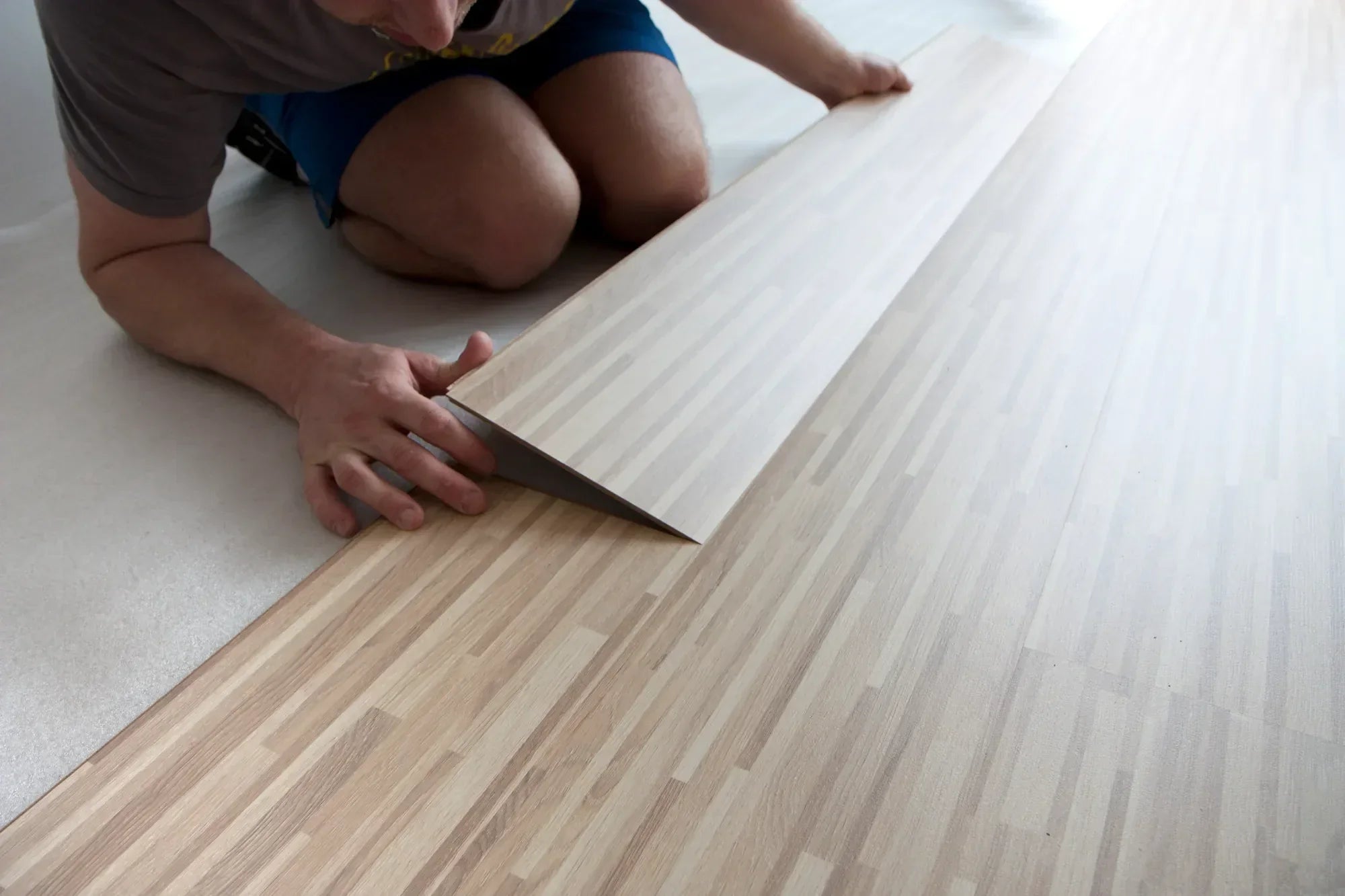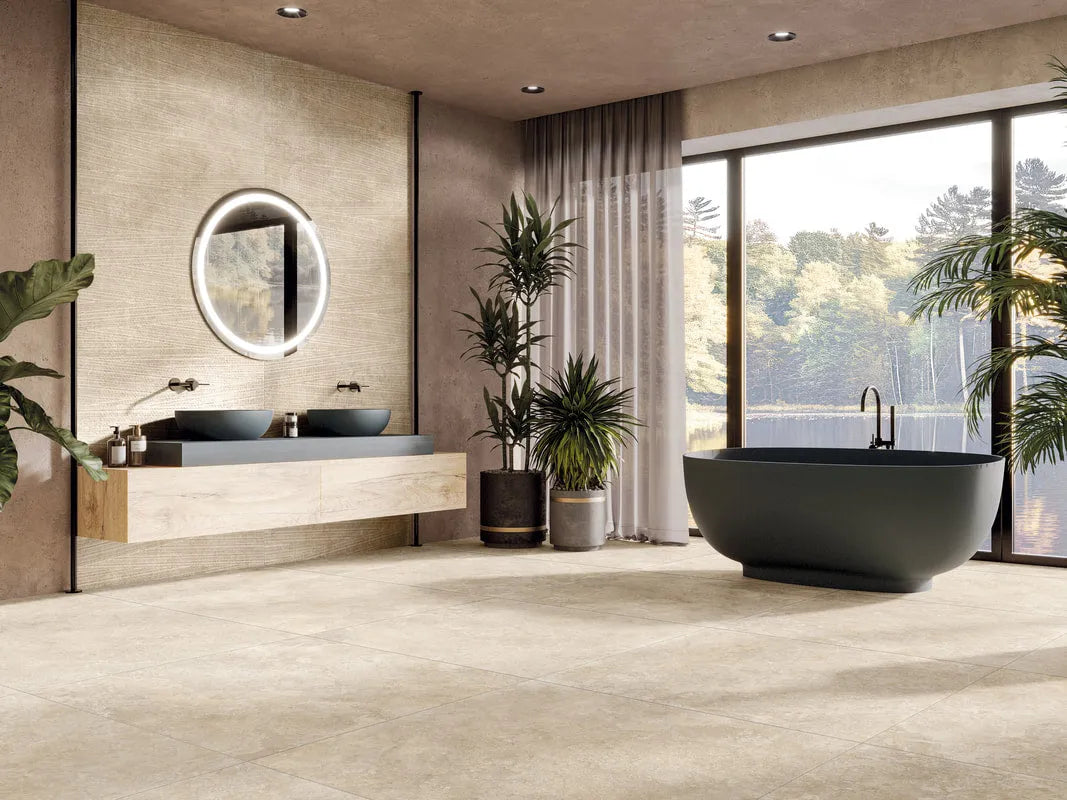Are you undecided between ceramic tile and porcelain tile for your next renovation project? This question constantly comes up among homeowners who want to make the right choice for their investment. The difference between ceramic tile and porcelain tile goes far beyond appearance and can significantly impact the durability, maintenance, and even value of your property.
Although these two materials are often confused, understanding the difference between ceramic and porcelain flooring requires analyzing their distinct characteristics. This detailed comparison will allow you to make an informed decision that perfectly fits your lifestyle and budget.
Summary
- The Basics: Ceramics and Porcelain Explained
- Fundamental technical differences
- Detailed comparison of features
- Recommended applications for each material
- Available formats and dimensions
- Installation techniques
- Selection guide according to your needs
- Long-term maintenance and upkeep
- Common Mistakes to Avoid
- Climate considerations
- Conclusion
- FAQ
The Basics: Ceramics and Porcelain Explained
Ceramic and porcelain belong to the terracotta tile family, made from clay and hardened by firing. Traditional ceramic is fired between 1000 and 1100°C, creating a terracotta "biscuit" tile visible on the edge.
[Insert photo here: Visual comparison between a ceramic tile and a porcelain tile, showing the difference in biscuit color]
Porcelain uses finer clays (kaolin, quartz, feldspar) and firing at 1200-1400°C. This intense firing creates complete vitrification, resulting in an extremely dense tile with a uniform, pale biscuit.
Fundamental technical differences
To truly understand the difference between ceramic and porcelain flooring, let's examine their technical characteristics. These fundamental distinctions will help you understand why the difference between ceramic and porcelain flooring has such an impact on their performance and durability.
Water absorption and porosity
Porcelain absorbs less than 0.5% of its weight in water, classifying it as "impermeable." This low absorption results from complete vitrification during high-temperature firing.
Ceramic absorbs between 0.5% and 4% of water depending on its quality, making it more vulnerable to infiltration, stains and freeze-thaw damage.
Mechanical resistance
Porcelain's higher density makes it exceptionally resistant to impacts, scratches, and daily wear. Ceramic, being more porous, remains more fragile when exposed to shocks and temperature fluctuations.

Detailed comparison of features
To help you quickly visualize the differences, here is a comparison chart of key features:
| Characteristic | Ceramic | Porcelain |
|---|---|---|
| Composition | Red or white clay | Fine, refined clay (kaolin) |
| Cooking temperature | 1000-1100°C | 1200-1400°C |
| Water absorption | 0.5% - 4% | < 0.5% |
| Frost resistance | Low to moderate | High |
| Wear (PEI) | 1-4 | 4-5 |
| Impact resistance | Moderate | High |
| Ease of cutting | High | Moderate |
| Standard thickness | 8-12mm | 6-20mm |
| Applications | Walls, moderate traffic areas | Floors, high traffic areas, outdoors |
Both materials are classified according to the PEI (Porcelain Enamel Institute) scale, which measures their abrasion resistance on a scale of 1 to 5. Porcelain typically achieves classes 4 and 5, making it suitable for the most demanding environments, while ceramic falls within classes 1 to 4.
Recommended applications for each material
The choice between ceramic and porcelain will largely depend on where you plan to install your new flooring and the intended use. Understanding the difference between ceramic and porcelain flooring will help you optimize your investment based on your intended use.
When to choose ceramics
Ceramic is ideal for residential wall and floor applications with moderate traffic (living rooms, dining rooms, bedrooms). Its ease of cutting makes it perfect for intricate designs. For those wondering "ceramic or porcelain" for these spaces, ceramic offers excellent value for money.
Porcelain excels in high-traffic and humid areas (entrances, kitchens, bathrooms, basements) and outdoor applications. Its resistance to frost and moisture makes it the optimal choice for patios and balconies. In the ceramic vs. porcelain flooring debate for outdoor use, porcelain wins hands down.
[Insert photo here: Porcelain tile installation in a modern kitchen with a center island]
Available formats and dimensions
Ceramic formats
- Standard tiles: 12" x 12", 16" x 16", 18" x 18"
- Rectangular formats: 12" x 24", 6" x 24"
- Standard thickness: 8-10mm
Porcelain formats
- Large formats: 12" x 12", 12" x 24", 24" x 24", 24" x 48", 32" x 32", 48" x 48", up to 60" x 120"
- Board sizes: 6" x 36", 8" x 48", 12" x 48"
- Variable thickness: 6-20mm
Porcelain offers more modern formats with fewer joints.
Installation techniques
Installation of ceramics
- Cutting with standard tools
- Faster installation
- Accessible to experienced DIYers
Installing the porcelain
- Specialized cutting tools required
- High-performance adhesives required
- Recommended technical expertise
Porcelain requires a more technical and professional approach.

Selection guide according to your needs
To help you make the right choice, here's a step-by-step selection guide that takes into account the difference between ceramic and porcelain flooring. This process will allow you to objectively assess the difference between ceramic and porcelain flooring based on your specific needs:
- Assess the location: Determine whether the area is high or low traffic, wet or dry, indoor or outdoor.
- Consider your budget: Ceramic is generally more affordable to purchase, but porcelain can offer better value in the long run.
- Consider maintenance: Porcelain is easier to maintain and more resistant to permanent stains.
- Assess the complexity of installation: Ceramic is easier to install for DIYers, while porcelain may require a professional.
- Choose the right style: Both materials offer a wide range of colors and finishes, but porcelain offers more modern formats.
- Consult an expert: Don't hesitate to ask a professional for advice to validate your final choice.
Long-term maintenance and upkeep
Ceramic
- Simple daily cleaning
- Annual joint sealing
- Lifespan: 15-20 years
Porcelain
- Minimal maintenance required
- Sealing joints every 2-3 years
- Lifespan: 25-30 years
Porcelain requires less maintenance but is more expensive to repair.

Common Mistakes to Avoid
Selection errors
- Choosing based solely on price without considering durability
- Ignore PEI grade for crossing areas
- Neglecting water absorption in wetlands
Installation errors
- Underestimating subfloor preparation
- Using the wrong adhesive for porcelain
- Neglecting expansion joints for large areas
Climate considerations
Harsh winters influence your choice of siding. Porcelain is more resistant to frost and de-icing salt thanks to its low porosity, making it the optimal choice for entryways and basements.
Conclusion
The main differences between ceramic and porcelain flooring lie in their density, strength, and versatility. Porcelain, being denser and less porous, offers superior durability and is suitable for the most demanding environments, while ceramic remains an economical and practical solution for areas with moderate traffic.
Your final choice will depend on your specific needs, budget, and installation location. Now that you know the difference between ceramic and porcelain flooring, you can make an informed decision. For a long-lasting investment suitable for harsh conditions, porcelain is often the wisest choice.
At Emard Couvre-Planchers, we offer a wide selection of ceramic and porcelain tiles for all your projects. Our team of experts can help you choose the perfect material for your specific needs. Check out our floor care guide or contact us for a personalized consultation!
FAQ
What is the main difference between ceramic flooring and porcelain flooring?
The main difference lies in water absorption. Porcelain absorbs less than 0.5% of water, making it almost impermeable, while ceramic is more porous with an absorption of 0.5% to 4%.
Is porcelain always more expensive than ceramic?
Generally, yes. Porcelain is more expensive to produce due to the thinner materials and higher firing temperatures. However, its cost can be justified by its superior durability and long-term maintenance savings.
Can you use ceramic for a kitchen floor?
Yes, the appropriate grade ceramic (PEI 2-4) is ideal for residential kitchens. Porcelain is recommended for high-traffic or commercial kitchens due to its superior strength and low porosity.
How to maintain a porcelain floor?
Maintenance is simple: regular sweeping and cleaning with a damp mop and neutral cleaner are sufficient. In winter, quickly clean off salt residue to prevent buildup. Avoid abrasive or acidic products that could damage the surface.



